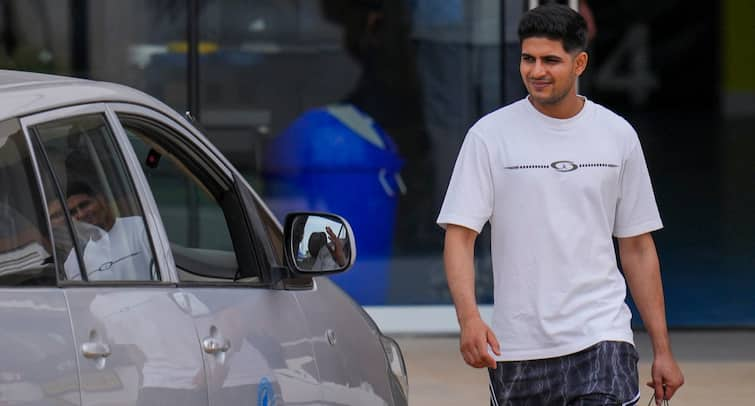It’s an important day in India. An election will be held today (September 9) which will decide the 15th vice president of the country. The polls today come after the sudden resignation of Jagdeep Dhankhar on July 21, citing health reasons, but sources believe quit after running afoul of the BJP-led central government over the impeachment of a high court judge.
Now, the stage is set for the high-stakes battle between CP Radhakrishnan of the BJP-led National Democratic Alliance (NDA) bloc and B Sudershan Reddy of the Indi Alliance.
Voting will begin today at 10 am with Prime Minister Narendra Modi casting the first vote and will continue until 5 pm. Counting will begin post 6 pm and the result will be declared later in the evening.
Let’s take a look at how exactly will this election be held.
Who are the candidates running for vice president?
On July 21, the country received the shocking news that Jagdeep Dhankhar, who had been elected as vice president in 2022, tendered his resignation to President Droupadi Murmu, stating health reasons for his step down.
It was after this that the BJP-led NDA nominated Maharashtra Governor CP Radhakrishnan for the second-highest constitutional post. Radhakrishnan is no stranger to politics; he’s been a veteran of the BJP and a two-time MP from Coimbatore during former Prime Minister Atal Bihari Vajpayee’s tenure. He also served as the governor of Jharkhand before taking over as Maharashtra Governor in July 2024.
On the other hand, the opposition has chosen former Supreme Court judge Sudershan Reddy as their pick for the election. Reddy served as a Supreme Court from 2007 to 2011 during which he delivered several landmark judgments. He was also the first Lokayukta of Goa, but stepped down within seven months, citing personal reasons. He had also declared Salwa Judum, appointed by the Chhattisgarh government, as unconstitutional.
Editor’s Picks
Where will the vice presidential elections be held?
The election will be held today (September 9) in Room F-101 at Vasudha in Parliament House. The voting will commence at 10 am and continue until 5 pm following which counting will begin and the results will be declared shortly thereafter.
Rajya Sabha Secretary General PC Mody will be the returning officer for the vice-presidential election.
How do the vice presidential elections work?
As per Article 66 of the Indian Constitution, the Vice President is elected by an “electoral college” comprising members from both Houses of Parliament — the Lok Sabha and the Rajya Sabha.
The electoral college is made up of 233 elected members of the Rajya Sabha, 12 nominated members of the Rajya Sabha and 543 elected members of the Lok Sabha — a total of 788 members. However, there are currently 781 members, due to the vacancy of six seats in the Rajya Sabha and one in the Lok Sabha.
Voting is held in Delhi’s Parliament House by secret ballot, deploying a “system of proportional representation by means of the single transferable vote.” It’s important to note here that electronic voting machines aren’t used in the vice presidential elections unlike the general elections. That’s because the EVMs aren’t designed for such polls.
Simply put, in the vice-presidential election, voters rank all the candidates in order of preference if they wish to. To do so, they must write 1, 2, 3, 4, 5, and so on, next to the candidates’ names in column 2 of the ballot paper. According to officials cited by PTI, the EVMs are not designed to register this system of voting. The EVM is an aggregator of votes and under the system of proportional representation, the machine will have to compute votes based on preference and it requires an altogether different technology.
To win the vice presidential election, a candidate must secure more than half of the total number of votes. However, if no one reaches the quota, the candidate with the lowest votes is eliminated and the votes polled are transferred to the existing candidates until someone wins. Usually, counting finishes on the same day.
To be eligible for the post, the candidate should be a citizen of India who is at least 35 years old; and qualified for election as a member of the Council of States.
“A person shall not be eligible for election as vice-president if he holds any office of profit under the Government of India or the Government of any State or under any local or other authority subject to the control of any of the said Governments,” Article 66 states.
Once elected, the vice-president holds office for a term of five years from the date on which he enters upon his office.
How do the numbers stack up in this election?
Given the numbers in the electoral college, NDA’s CP Radhakrishnan is expected to win the election as the BJP and its allies have a total of 427 members in Parliament and are expected to vote one way. The Opposition camp has 324 MPs, with the Congress having 126 members.
Moreover, the chances tilt in the NDA’s favour after the Naveen Patnaik-led Biju Janata Dal (BJD) and the K Chandrashekar Rao-headed BRS, which are not part of the NDA or the Indi Alliance, announced Monday that their MPs will abstain from voting in the high-profile election.
And with both these parties opting to abstain, the electoral college is set to come down to 770 votes, with the majority mark being 386.
Interestingly, in the 2022 vice-presidential poll, Dhankhar had secured 528 votes as against Alva’s 182.
What is the role of the vice president?
Once appointed, the vice president of India will also preside over the Upper House of Parliament. The vice president can also become ‘acting President’ if the sitting President resigns, or in case of their death or removal. The VP discharges the functions of the president until a new person is elected to the post.
With inputs from agencies
End of Article

)

